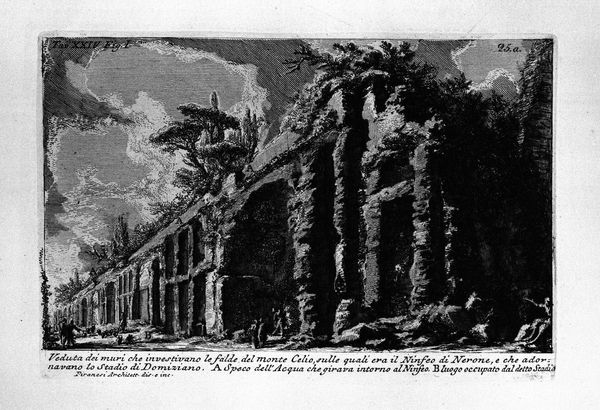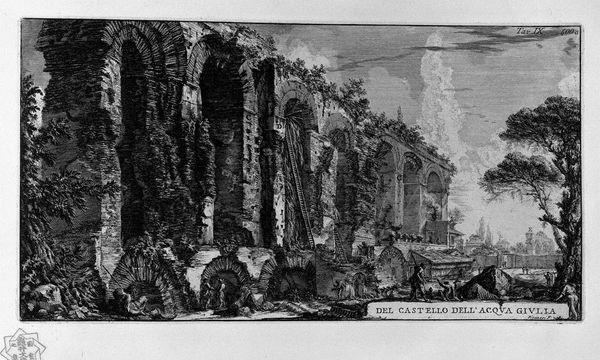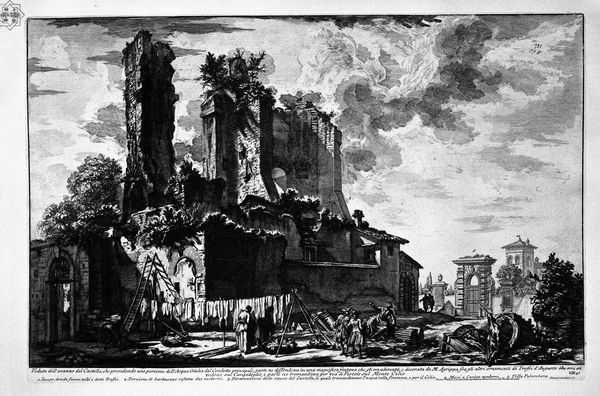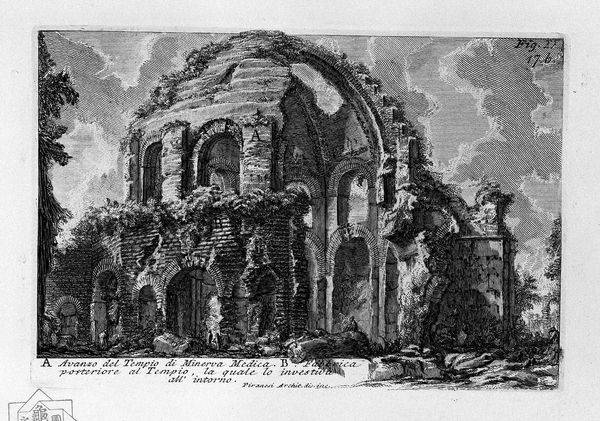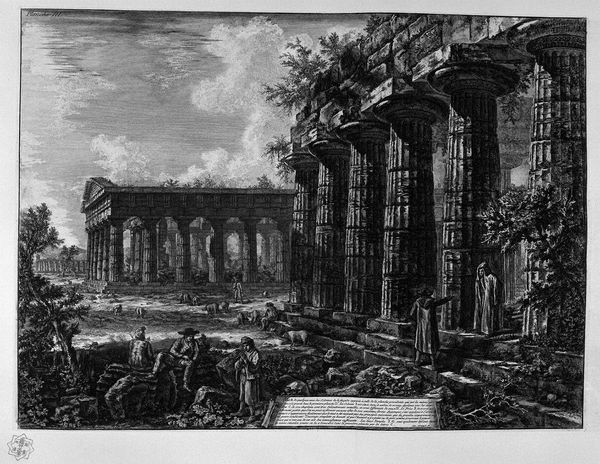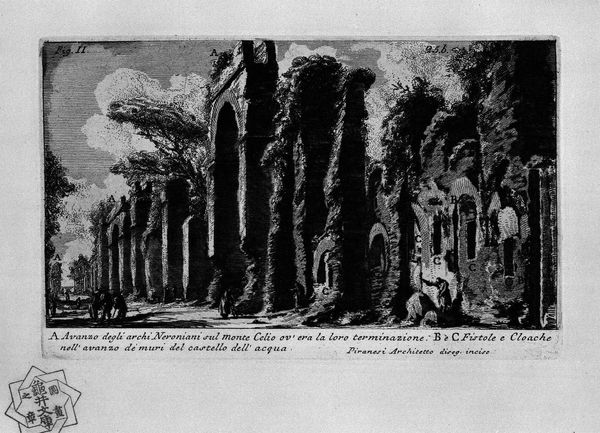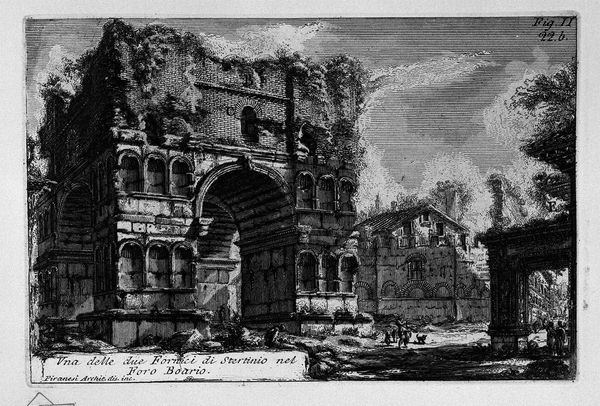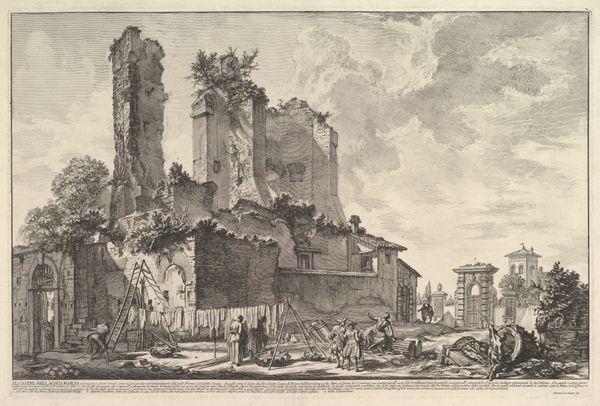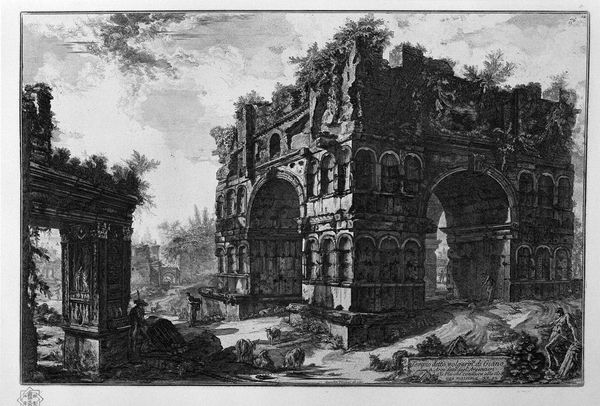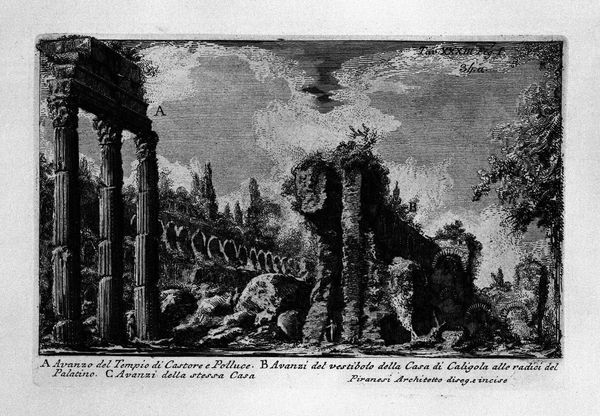
print, etching, engraving, architecture
# print
#
etching
#
landscape
#
romanesque
#
ancient-mediterranean
#
column
#
line
#
engraving
#
architecture
#
monochrome
Copyright: Public domain
Curator: This is a plate from Giovanni Battista Piranesi's "The Roman Antiquities," specifically Volume 1, Plate XVII, depicting the Aqua Claudia. It was completed in 1756, and what we're seeing here is an engraving. Editor: My immediate response is awe. It feels both imposing and delicate. The ruins dominate, yet the delicate lines of the engraving give it an almost ethereal quality. It seems to capture both the grandeur and decay of Rome simultaneously. Curator: What strikes me is Piranesi's process. The creation of an engraving like this, think about the labor, the carving into the metal plate, the repetitive printing. It speaks to the sheer volume of visual documentation he wanted to produce about Roman architecture and how it functions. The distribution, too, speaks volumes: these prints allowed others to access Roman splendor. Editor: I am more struck by how Piranesi uses symbols here. He’s showing us a powerful aqueduct, a literal life-giving artery of the Roman empire, now in ruins. Consider how it served as a testament to Roman engineering and dominance, but seeing it broken conveys ideas of fragility. Time’s passage makes us reflect on power. The symbolic cloud is quite ambiguous. Curator: Yes, but note the detail etched in the foreground where there appear to be common people wandering amidst the ruins, juxtaposing the aqueduct with scenes from the eighteenth-century existence; this really emphasizes the consumption of these historical remnants. Tourism transformed this location; we see evidence of that industry in the piece's deliberate, picturesque style. Editor: Perhaps he intended to evoke the weight of history but it has me focusing on nature’s resilience; the arches of the aqueduct feel like skulls with foliage bursting out. Even decay is beautiful in its way, a symbol of ongoing regeneration and the eternal cycle of things, and Piranesi, by depicting these images, almost places a personal symbolic "stamp" over their images for his patrons to see! Curator: A brilliant point, reflecting that labor produces meaning, always circulating with time and trade. The artwork helps illuminate Rome as more than an aesthetic source for paintings. Instead, it exposes material resources for architects, travelers, and builders. Editor: A collaboration and dialogue between epochs if you will. These are compelling angles which create enduring appreciation!
Comments
No comments
Be the first to comment and join the conversation on the ultimate creative platform.
